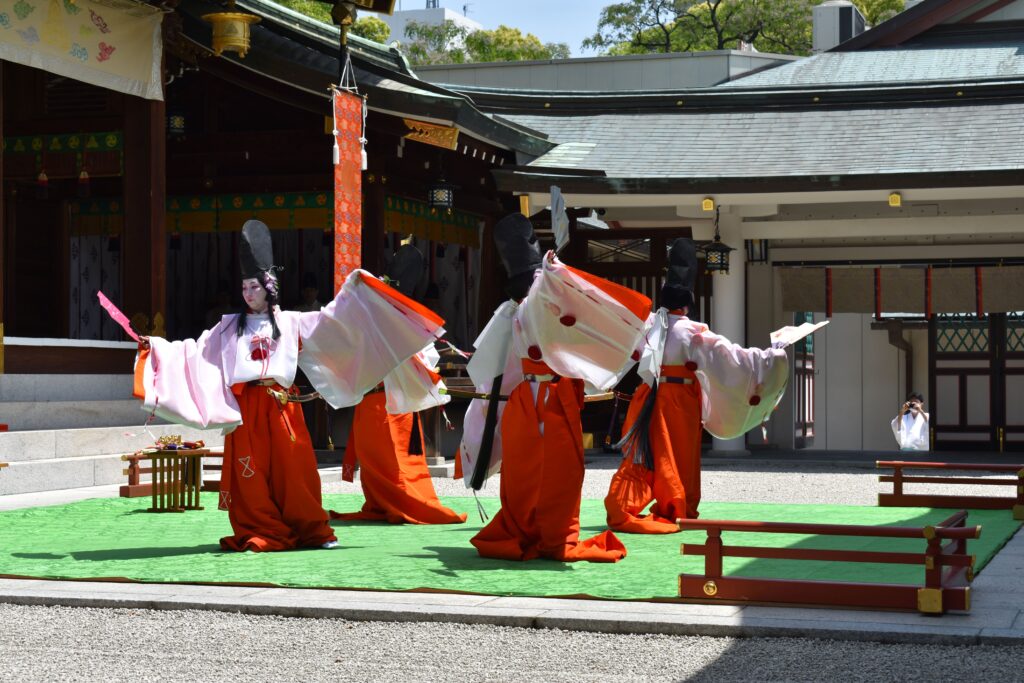I performed “Ryukaen” female dance in “Yoshino Hyoroku Yume Matsuri”, held in Yoshino Park in Kagoshima Prefecture.
“Yoshino” is a name of place, while “Yume Matsuri” means a dream festival. And Hyoroku is a man’s name.
He is the protagonist of the Oishi Hyoroku Story and is supposed to be the son of the real Oishi Kuranosuke. Oishi Kuranosuke served the feudal lord Asano Naganori. In 1702, Asano Naganori quarreled with Kira Yoshinori at Edo Castle, the shogun’s residence, and cut him down. Asano Naganori was ordered to commit seppuku for this, but Kira Yoshitaka was not blamed. Oishi Kuranosuke was dissatisfied with this and broke into Kira Yoshinori’s house and took his head.
The story of Oishi Hyoroku was written by Mori Masanao in the Edo period (1603-1867) and is one of the most highly regarded pieces of local literature in Kagoshima.
This story was written during a time when it was not allowed to speak out in criticism of those in power in politics. The author, Masanao, set the story more than 100 years in the past, while describing the society of Kagoshima in the time in which he actually lived. The story is a mixture of laughter and satire while blurring the harsh criticism. It is said that the story was originally based on an opinion piece written by the vassals of the Satsuma clan at the time, who were concerned about the corruption of their lord.
In Kagoshima, efforts are now underway to teach this story to children as Kyogen, a traditional comedy. The Yoshino Hyoroku Dream Festival is also an opportunity for such children to perform the kyogen they have learned. In addition to Kyogen, school brass bands and dances by local residents are also performed.
